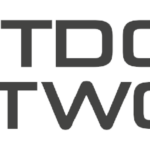
In South Africa, generally the level of knowledge of what programmatic media buying is, is low – says Sprout Media Performance. The problem with this, is that programmatic isn’t going away. In fact, it’s growing. Globally programmatic spend has doubled in three years and already in the US, display is outdoing search.
Programmatic media buying has changed digital marketing for good, and therefore marketers and media buyers that operate across digital are urged to understand and utilise the technology available to optimise media campaigns beyond the last click.
The main drivers of programmatic in SA are e-commerce advertisers who gather and interpret online consumer behaviour to sustain business growth. This is where data driven advertising bought programmatically comes into play. If marketers can measure how an online awareness campaign has impacted monthly online sales, it will prove difficult to go back to the traditional way of online media buying, where tracking and buying is not integrated, nor automated.
So, simply put, programmatic is display media bought through an automated process that allows marketers to target online browsers, early on in the customer journey, in order to drive awareness in an effort to optimise the campaign towards a digital conversion (sale/lead). It allows marketers to buy an impression while targeting the right audience, at the right time, with the right message at the right cost.
Context is critical in an effective programmatic campaign. Marketers need to understand the customer journey and the phase in which the message needs to be applied. By tracking consumer intent moments, marketers can optimise the phases of a campaign on the right performance indicators, using the right attribution model – the science of determining which media channels are driving purchases.
Advertisers and agencies who don’t employ programmatic tend play the last click ‘game’ and think in silos. They fall victim to assessing every channel on the number of direct sales or leads it generates, but a digital media strategy should be thought of as a team sport. Players should be assessed on the roles they play in the team, for instance a prop delivers a good scrum (i.e. prospecting/upper funnel channels like social ads and video) and a wing scores tries (i.e. conversion channels like brand search and remarketing).
A programmatic campaign is most effective when these three key phases are identified and the appropriate messaging applied;
Phase 1: attract attention/interest (touch)
Phase 2: turn interest into desire (tell)
Phase 3: turn desire into action (sell)
It’s clear to see why moving away from silos is important. Ultimately, the goal should be to integrate display, social and search with one cost per acquisition across all channels. Creativity is key in this too, as it can increase relevance and deliver personalised messaging for the relevant phase.
Progressive advertisers are clear on the benefits to programmatic media buying;
- Marketers are able to buy on a ‘per impression’ base with no upfront commitment.
- Through this model, marketers can directly target audiences rather than having to go via publisher titles.
- Engagement can happen early on in the customer journey at a low cost per engagement.
- There is far more integration between online marketing and sales for an effective online marketing campaign as digital is able to deliver more than just a brand building exercise or just a drive for sales conversion.
- Programmatic optimisation is in real–time, which allows room for flexibility and change in tactics for greater efficacy.
- And campaigns can be optimised to meet various measurables, and not just clicks or sales.
The future of digital marketing is consolidating technology, data and people, to track and scale performance based marketing campaigns. There’s a robust business case for it.
- The BRC announces changes to the board and updates for 2025 - 17th December 2024
- Top 50 DSTV TV programmes – October 2024 - 12th November 2024
- Top 50 FTA TV programmes – October 2024 - 12th November 2024





